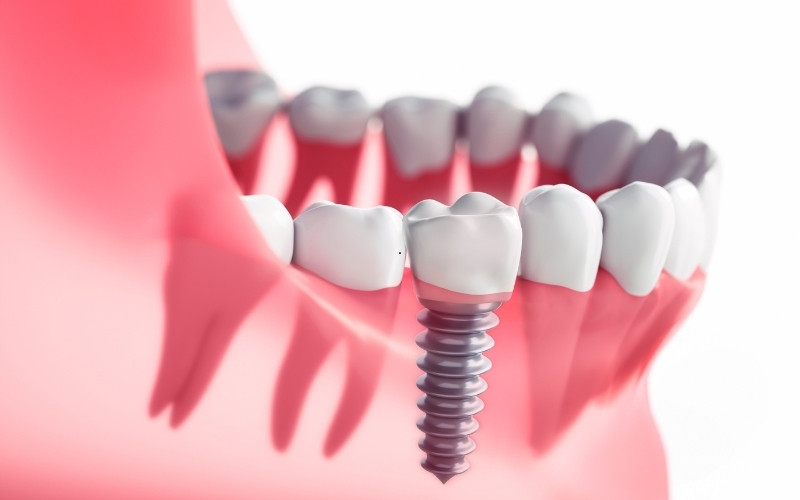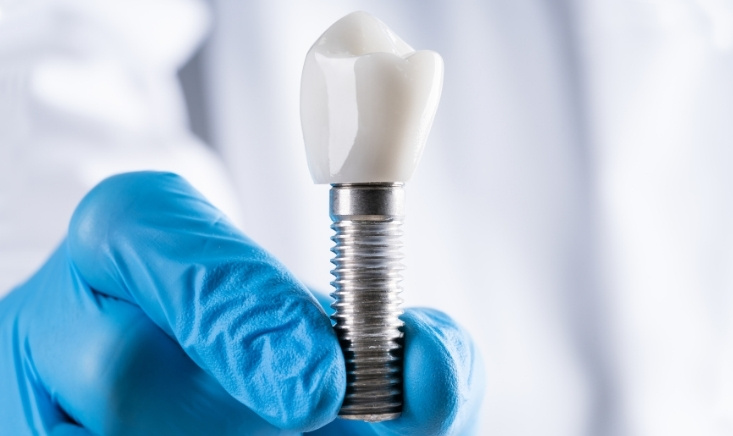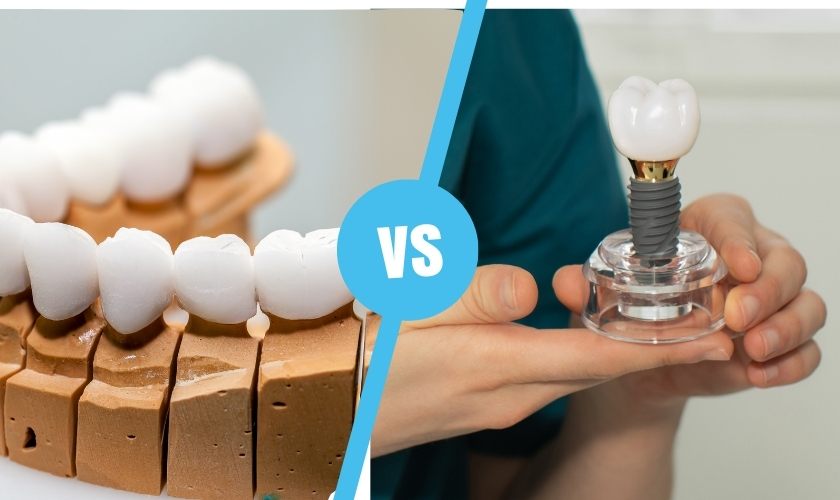The Complete Guide To Understanding How Dental Implants Work

Did you know that over 3 million people in the U.S. have dental implants? This number continues to grow as more individuals seek permanent solutions for missing teeth. Implants offer a functional and aesthetic alternative to dentures or bridges, making them an increasingly popular choice.
This guide will provide comprehensive insights into dental implants, including their purpose, types, benefits, and the entire process of getting one. Understanding how implants work can empower you to make informed decisions about your oral health. So, let’s dive into the world of dental implants and uncover everything you need to know!
What Are Dental Implants?
Dental implants are artificial tooth roots surgically placed in the jawbone. They serve as sturdy anchors for replacement teeth or bridges. A dental implant consists of three main components: the implant screw, the abutment, and the crown.
The implant screw is made of titanium, a biocompatible material that integrates with the bone. The abutment connects the implant screw to the crown, which is the visible part of the tooth.
There are different types of dental implants, each serving specific needs. Endosteal implants are the most common type. They are inserted directly into the jawbone. Subperiosteal implants are placed under the gum but above the jawbone. These are ideal for patients with insufficient bone height. Zygomatic implants, anchored in the cheekbone, are a less common option.
Each type caters to various anatomical and health conditions, ensuring patients receive the best possible fit for their needs.
Benefits of Dental Implants
Aesthetic Benefits
Dental implants offer significant aesthetic advantages. They look and feel like natural teeth, restoring a person’s smile. This natural appearance boosts self-confidence and enhances overall facial aesthetics.
Unlike dentures, which may slip or feel uncomfortable, implants remain fixed in place. This reliability allows individuals to smile freely without fear of their teeth shifting or falling out.
Functional Benefits
Dental implants significantly improve functionality. Patients with implants can chew food more effectively, enjoying a wider variety of diets. They can eat hard and crunchy foods without worry.
Furthermore, implants improve speech by eliminating the slippage common with dentures. Clearer speech leads to better communication, which can enhance social interactions.
Long-term Health Benefits
Dental implants provide crucial long-term health benefits. One key advantage is their ability to prevent bone loss. When a tooth is missing, the jawbone can deteriorate over time. Implants stimulate the jawbone, promoting its strength and health. This stimulation helps maintain the natural shape of the face.
Additionally, dental implants help maintain the integrity of surrounding teeth. By filling the gap of a missing tooth, implants prevent neighboring teeth from shifting. This stability reduces the risk of dental issues in the future, promoting better oral health overall.
The Dental Implant Process
Initial Consultation
The journey to dental implants begins with an initial consultation. During this visit, the dentist will evaluate your oral health. They will conduct a thorough examination of your teeth and gums. This assessment helps determine if you are a suitable candidate for implants.
Treatment Planning
After the initial assessment, treatment planning begins. The dentist will take imaging tests, such as X-rays or CT scans, to assess bone density. This information is crucial for designing a personalized treatment plan that meets your needs.
Surgical Procedure
Once the plan is set, the surgical procedure can begin. The dentist administers anesthesia to ensure comfort during the surgery. They will then place the implant screw into the jawbone. After the screw is positioned, the gum is stitched back over the implant.
Osseointegration
After surgery, the process of osseointegration begins. This is where the jawbone grows around the implant, securing it firmly in place. This crucial step can take several months. Osseointegration is vital for the long-term success of the implant. A well-integrated implant ensures stability and functionality.
Placement of the Abutment and Crown
Once osseointegration is complete, the next steps occur. The dentist places the abutment on the implant. This component connects the implant screw to the crown. After placing the abutment, impressions are taken to create a custom crown.
Finally, the crown is attached, completing the restoration process. The result is a fully functional tooth that looks and feels natural.
Candidates for Dental Implants
Ideal Candidates
Not everyone is a suitable candidate for dental implants. Ideal candidates include those with good oral health and sufficient bone density. Healthy gums also play a significant role in implant success. Individuals who do not smoke and maintain good hygiene are more likely to benefit from implants.
Health Considerations
Several health factors can affect eligibility for implants. Patients with chronic conditions like diabetes or heart disease should consult their doctors before proceeding. Bone density is also crucial. Insufficient bone may require procedures like bone grafting. Our dentist will assess these factors during the consultation.
Care and Maintenance of Dental Implants
Oral Hygiene Practices
Caring for dental implants is similar to caring for natural teeth. Regular brushing and flossing are crucial to maintaining oral hygiene. Using non-abrasive toothpaste can help protect the implant’s surface. Additionally, patients should use a soft-bristled toothbrush to prevent damage.
Regular Dental Check-ups
Regular dental check-ups are vital for monitoring implant health. A dentist can identify potential issues early, ensuring long-term success. Routine cleanings help maintain gum health and prevent infections around the implant site.
Longevity of Implants
The longevity of dental implants can depend on various lifestyle factors. Smoking can negatively impact the healing process and overall implant success. Maintaining a balanced diet and avoiding excessive sugar can also promote gum health. With proper care, dental implants can last a lifetime.
Dental implants offer a reliable and aesthetic solution for missing teeth. This guide highlighted what dental implants are, their benefits, and the process of getting them. If you are considering dental implants, consulting with our dental professional is crucial. We can assess your individual needs and provide personalized recommendations. Do not wait—schedule your consultation today and take the first step toward a healthier smile!





